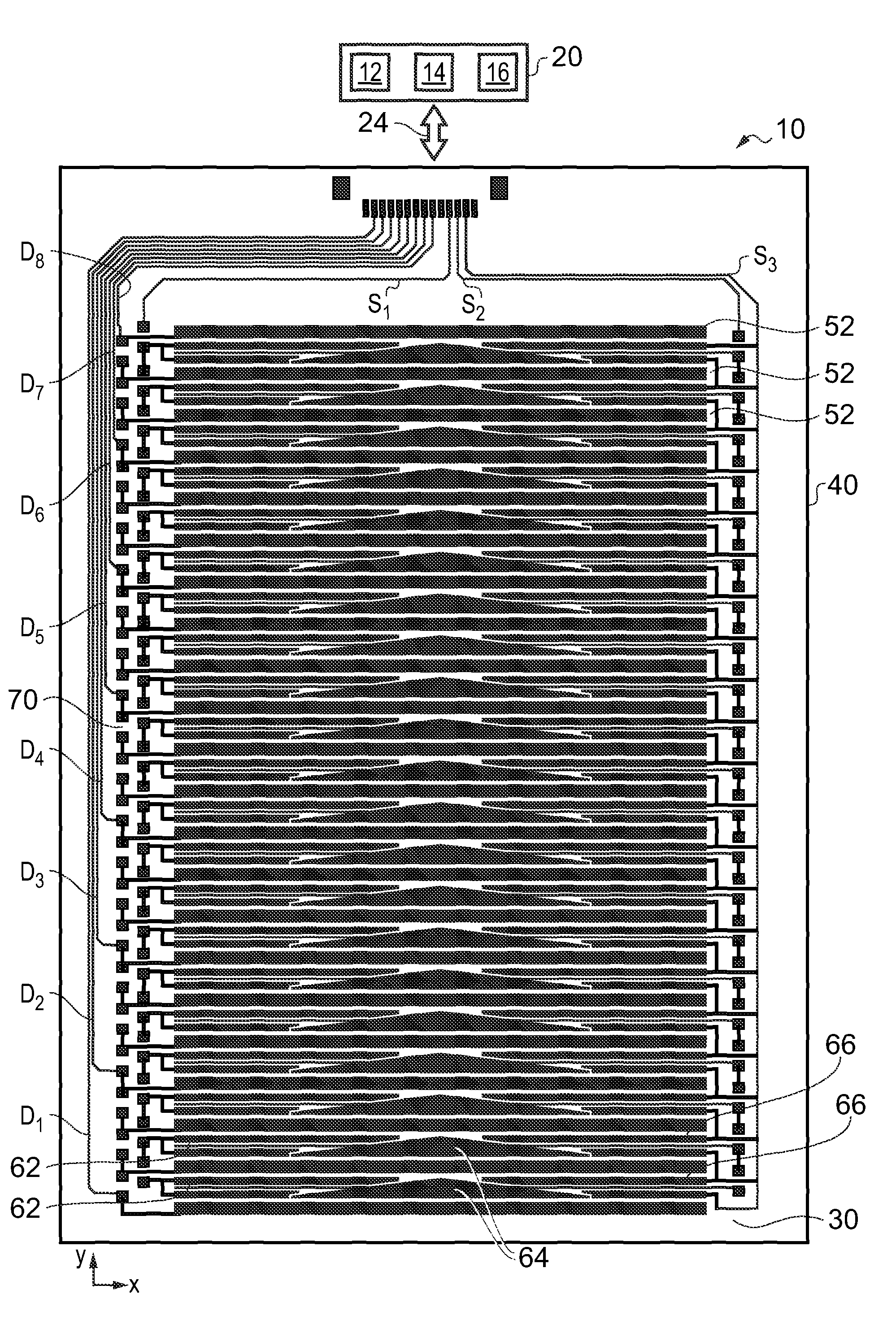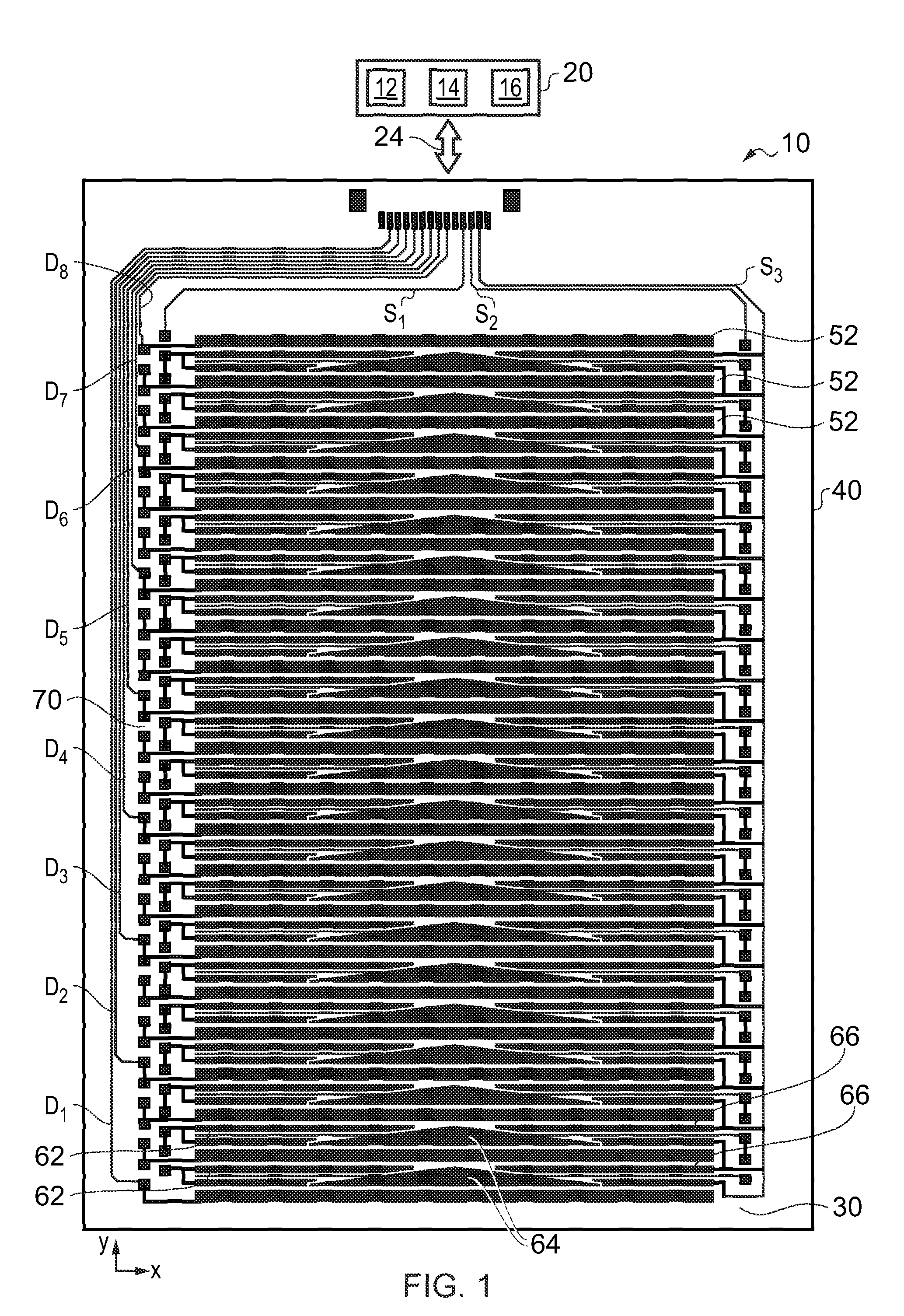Two-dimensional position sensor
a position sensor and two-dimensional technology, applied in the field of two-dimensional position sensors, can solve the problems of high cost, physical space and complexity, and high cost of circuit connections, and achieve the effects of reducing the resistance of the path, reducing the amount of conductive materials, and reducing the capacitive coupling
- Summary
- Abstract
- Description
- Claims
- Application Information
AI Technical Summary
Benefits of technology
Problems solved by technology
Method used
Image
Examples
Embodiment Construction
[0040]FIG. 1 is a view of a front side of a position sensor 10 according to an embodiment of the invention. The front side of the position sensor is typically the side facing the user during normal use of the sensor or an apparatus incorporating the sensor. The sensor 10 comprises a substrate 40 bearing an electrode pattern 30 defining a sensitive area of the sensor and a controller 20. The controller 20 is coupled to electrodes within the electrode pattern by a connection 24. The electrode pattern is on one side of the substrate, typically on the opposite side of the substrate from the side facing the user during normal use.
[0041]The electrode pattern 30 on the substrate 40 can be provided using conventional techniques (e.g. lithography, deposition, or etch or deactivation techniques). The substrate is of a dielectric material such as a plastics film, in this case Polyethylene Terephthalate (PET). The electrodes comprising the electrode pattern are of a transparent conductive mater...
PUM
 Login to View More
Login to View More Abstract
Description
Claims
Application Information
 Login to View More
Login to View More - R&D
- Intellectual Property
- Life Sciences
- Materials
- Tech Scout
- Unparalleled Data Quality
- Higher Quality Content
- 60% Fewer Hallucinations
Browse by: Latest US Patents, China's latest patents, Technical Efficacy Thesaurus, Application Domain, Technology Topic, Popular Technical Reports.
© 2025 PatSnap. All rights reserved.Legal|Privacy policy|Modern Slavery Act Transparency Statement|Sitemap|About US| Contact US: help@patsnap.com



